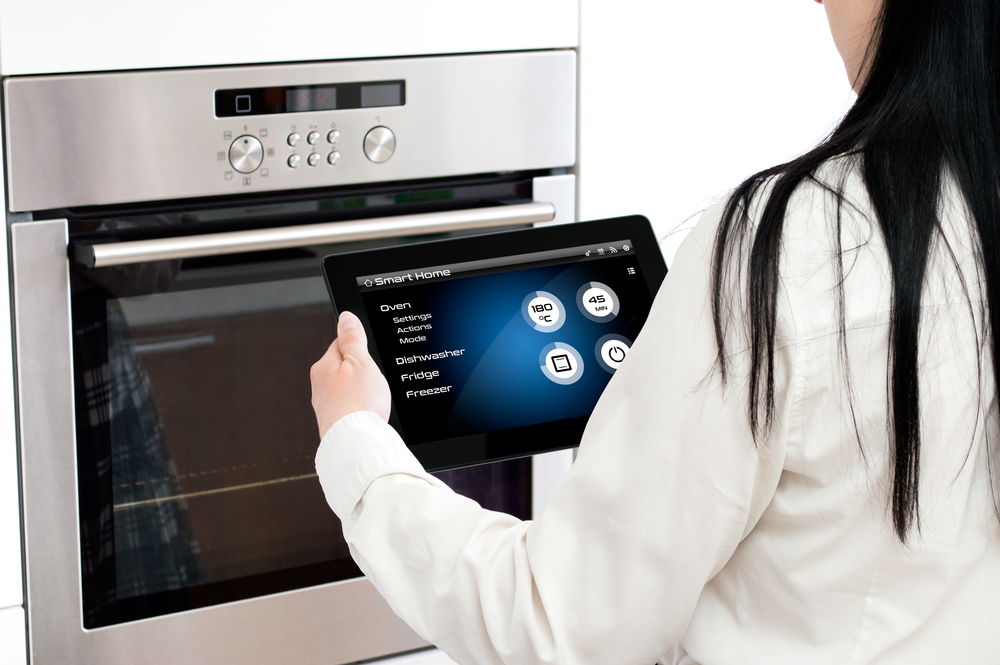How to Automate Appliances and Take Charge of Utility Costs
Most homeowners probably have a home energy horror story. There are those times when homeowners came home late at night only to realize the lights were left on throughout the house or the moments when the house feels like an oven after a child adjusted the heat to a balmy 80 degrees.
Appliance misuse can lead to utility costs that break the bank, but here is a simple solution that can ensure homeowners never have another energy horror story. Automating appliances, gadgets and devices allows them to be controlled remotely; here’s how to automate appliances and take charge of those monthly utility costs.
Is Automation Expensive?
Automating appliances and gadgets might sound like some futuristic fad. Automation is easy, though, thanks to the Internet of Things. Homeowners can purchase smart plugs and/or smart powerstrips that can be placed in electrical outlets.
Homeowners simply plug their appliances and gadgets into these smart home tools to automate their power. Smart plugs and smart powerstrips typically can be controlled via an app installed on a smartphone or tablet.
Using the app, homeowners can turn on the plugs or quickly turn them off to cut power to everything using these smart tools. For homeowners, smart plugs and power strips can provide peace of mind.
Is automation expensive? Smart plugs and powerstrips can vary in price. Homeowners can find them at stores or online. In addition, many of these smart tools are compatible with virtual assistants like Alexa, and this makes controlling appliances and devices even more simplistic (and hands-free).
Automate Heating & Cooling with Smart Thermostats
To automate the HVAC system, homeowners also can install smart thermostats. Like other smart tools, these thermostats can be controlled remotely via an app installed on a phone or tablet.
Smart thermostats let homeowners adjust the temperature from anywhere. Smart thermostats also can be programmed to switch temperatures at different times of the day to improve energy efficiency.
Some smart thermostats might be eligible for rebates, too. Homeowners can research applicable rebates via ENERGY STAR.

What Appliances Should Homeowners Automate?
Homeowners can focus their automation on the appliances that use the most energy to make the most impact on their utility costs. Heating and cooling account for the majority of the home’s energy use. For this reason, homeowners might focus on installing a smart thermostat to automate the temperature of their home.
Lighting also uses a lot of energy especially if homeowners have a tendency to leave the lights illuminated when they leave a room. Lamps can plug into smart power strips or plugs. Smart LED bulbs also are an energy-efficient lighting choice; these bulbs include a hub or port that allows them to connect to devices for remote access and control. Smart LED bulbs also could be compatible with virtual assistants.
Some appliances are smart by design and might offer their own app for automation. Homeowners can shop for smart refrigerators, smart ranges, and even smart dishwashers and washing machines. Smart appliances can include Wi-Fi and offer compatibility with virtual assistants.
Save Water by Automating Faucets
While monthly water bills might not be incredibly high for homeowners, water is a precious resource that shouldn’t be wasted. It’s easy to leave the water running while washing hands or brushing teeth, but running water just wastes water and increases the utility costs.
Homeowners can automate their bathroom faucets by installing touch-free faucets. These faucets turn on when they sense motion and turn off when motion isn’t detected. This automation leads to less water waste and, hopefully, a lower water bill.

A Fully Automated Home is a Smart Home
As consumers are being more conscious about energy misuse and are more mindful about climate change and environmental concerns, smart homes are now becoming popular. A smart home is designed with automated appliances to give homeowners more control over their energy use.
While home buyers might design their dream home with smart capabilities, all homes could include automation to make the home smarter. Not only can homeowners install smart plugs and powerstrips, but smart home hubs like the Amazon Echo and Google Nest allow for devices and appliances to be controlled by their virtual smart assistants.
In addition, a smart thermostat also is an important feature of a smart home. This automated thermostat allows homeowners to create individualized programs to increase the energy efficiency of the home’s HVAC system. These thermostats also might be compatible with other devices like the Echo or Nest.
Automating the home isn’t difficult, and homeowners might make adjustments gradually. When light bulbs need to be replaced, consider swapping in smart LED bulbs. Purchase a few smart plugs or power strips and begin automating smaller appliances and gadgets. When homeowners need a new thermostat, upgrading to a smart option could lead to savings, too.
Be smart about energy use by embracing automation. Use the Internet of Things to decrease the energy consumption in the home and take control of utility costs. Automation can help homeowners save money and decrease their environmental impact, too.


